May 14, 2017
Martha O'Kennon
What a strange week! I have the heat turned back on, for the sake of our three fur-covered friends and also now, I admit, for me! I hardly took any scenery pictures, although "Spring" hasn't finished. Here are still a few more tulips, a jack-in-the-pulpit in the woods,.
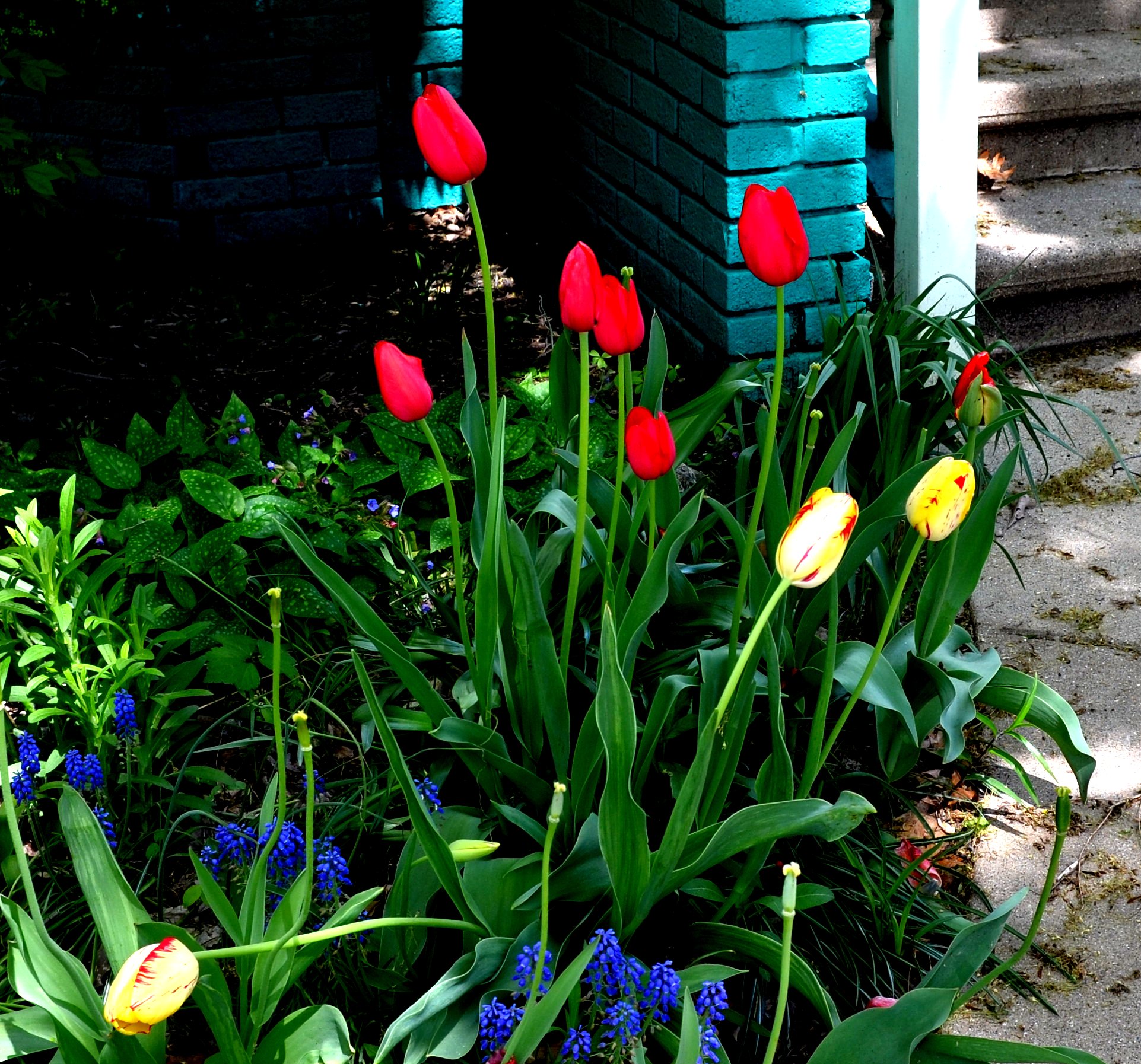

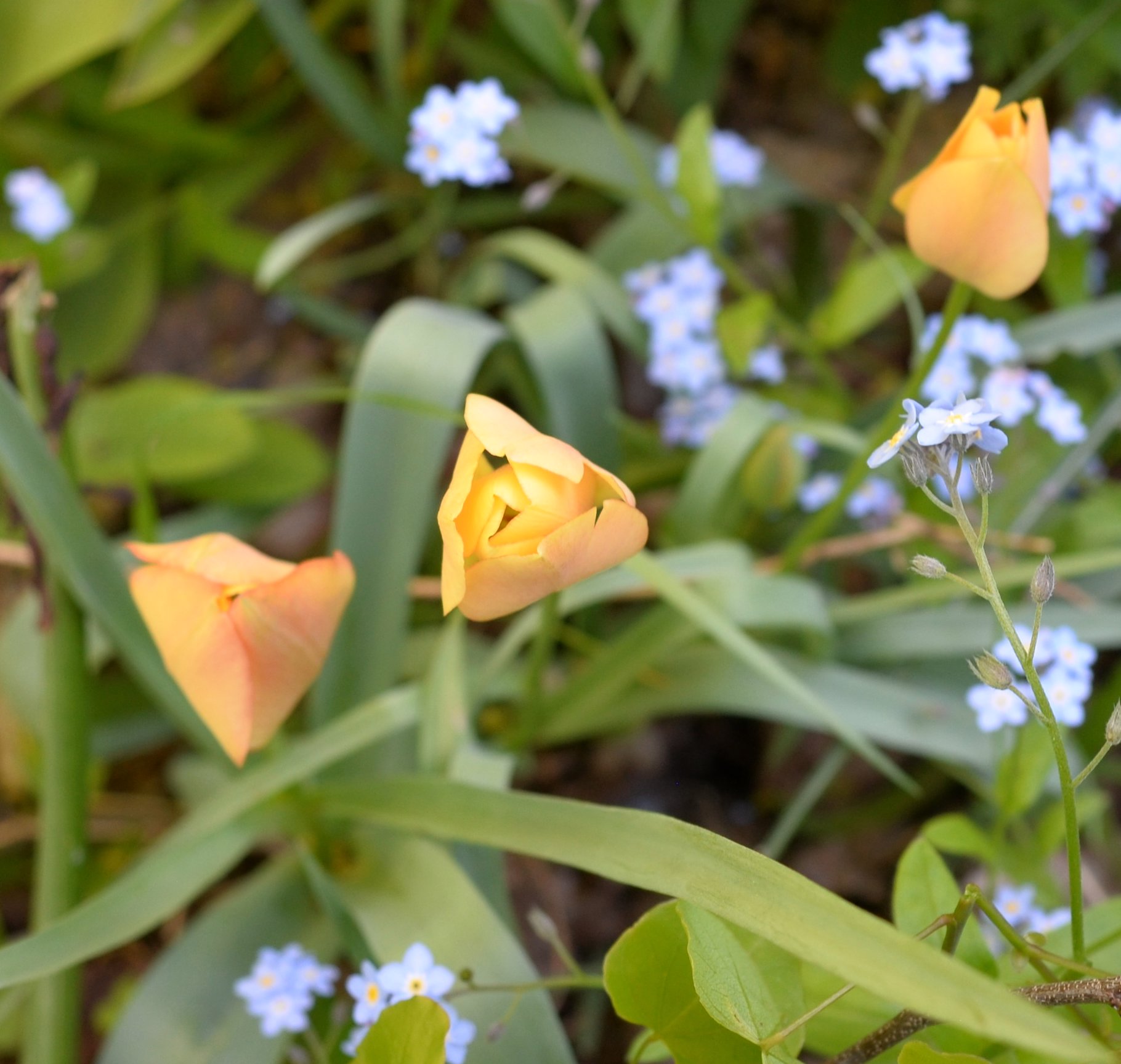 Whereas last week's ants (various forms of Carpenter Ants that always seem happy outdoors) could be seen at any moment, this week they took a break (or went indoors, oops). No, that really wasn't true. The usual big black ants performed their annual duty of loosening the plates of the peony bud. (As a note, after a week or so, the ants did in fact move inside..Sorry, budding entomologists, that's what your shoe is for.)
Whereas last week's ants (various forms of Carpenter Ants that always seem happy outdoors) could be seen at any moment, this week they took a break (or went indoors, oops). No, that really wasn't true. The usual big black ants performed their annual duty of loosening the plates of the peony bud. (As a note, after a week or so, the ants did in fact move inside..Sorry, budding entomologists, that's what your shoe is for.)
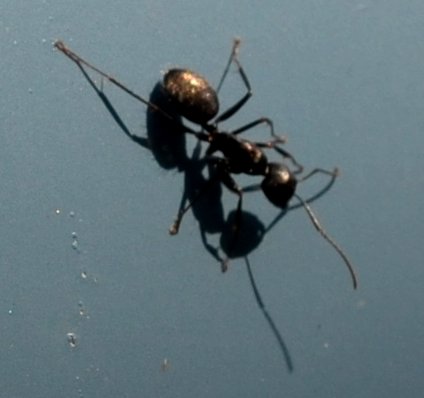
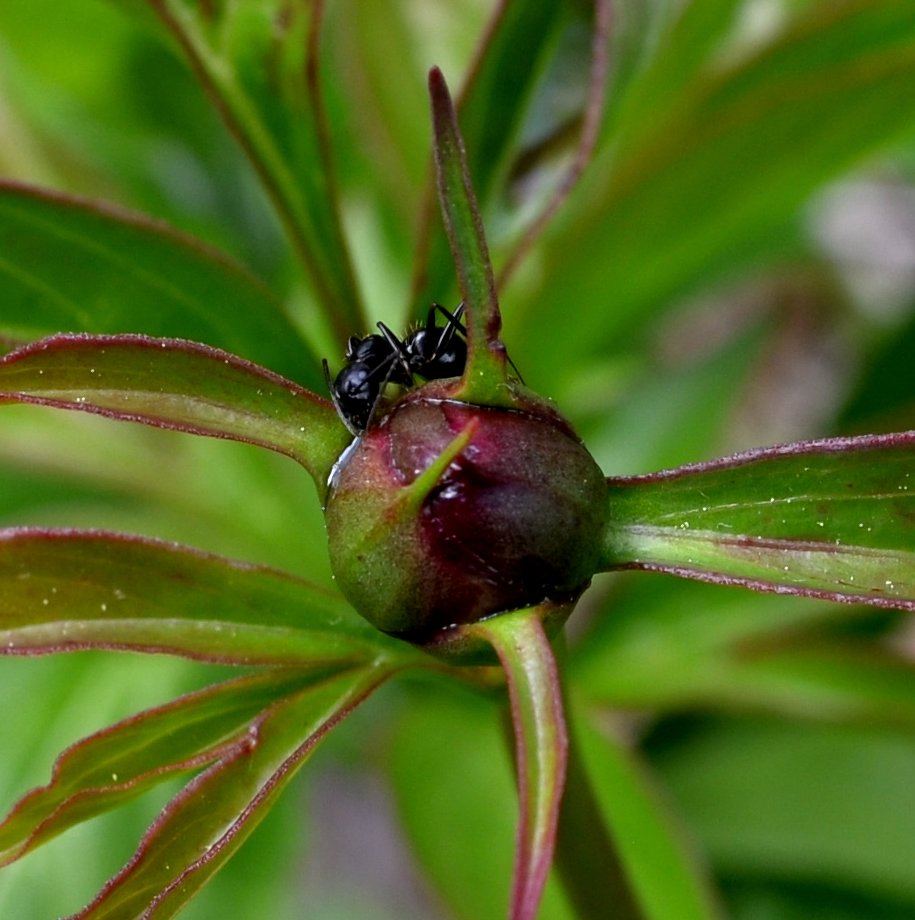
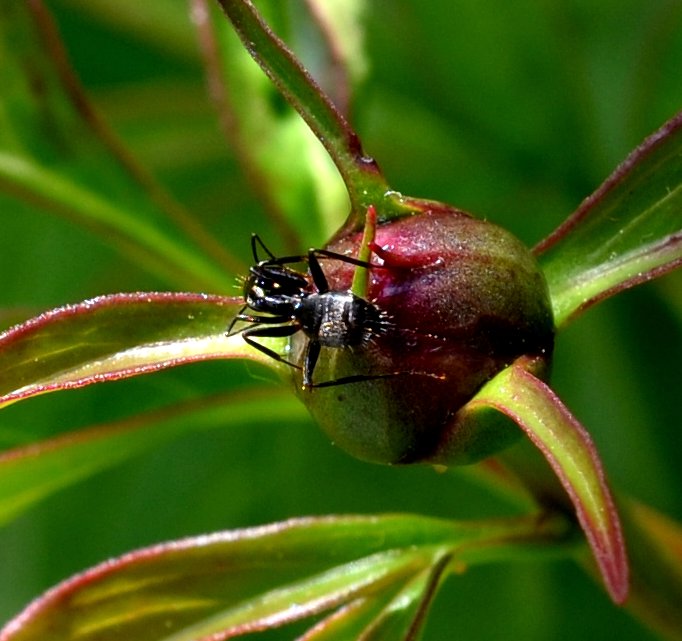
Remember that there is information in the name of the file for each image. You can see it by mousing over the image - look at the lower left of the screen.
Or you can click on the image to get to the (usually) larger image. Then the info is displayed in the address line above.
I've bought a few books lately. For bees, The Bees in Your Backyard has been quite a nice book. The photos do a good job of helping you see what's going on behind those pretty faces. I think I told you that carpenter bees generally (a) buzz loudly; (b) spend a short time at any particular flower The pulmonaria have probably been the breaking of all the rulebooks. Their flowers are so small that a bee has to stop just long enough to get me this one shot. I've finally gotten to know that this little black/blue/white bee is an Unequal cellophane bee, Colletes inaequalis. And that this fluffy little golden bee, which I got to know from the little new (and dead) one on the front porch is the same as the one on the forget-me-nots. How to forget that crystalline blue(Here is one of the weaknesses of the new book: Try to go back and forth between your file of "bee on front porch" and here on the blog construction software - it's like the 80's all over again!) Especially since somehow my usual sinusitis went acute again and I'm not so clear-minded (don't laugh, people who think that's my usual MO.) Yes, I did get it.
Here is a little bee with two vertical stripes on its head, moving around in that golden wood poppy's flower head. However true that may be, it isn't a good descriptor for the image in the book. Or the two stripes aren't very important in ID'ing something so small. So - here is the same little tiny bee (second image) and
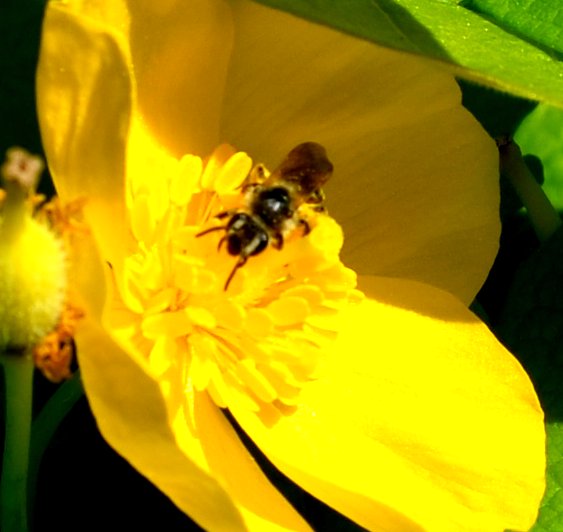
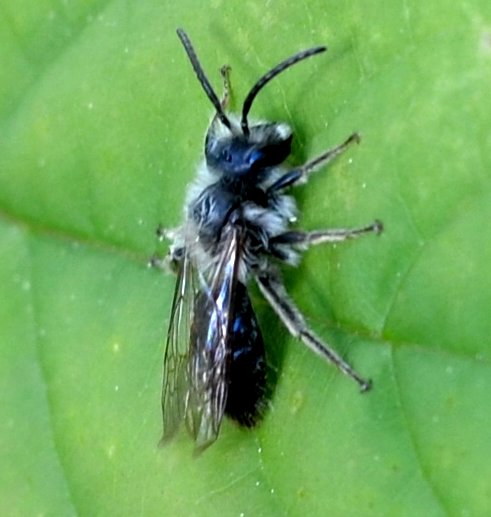
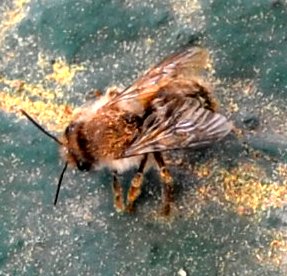
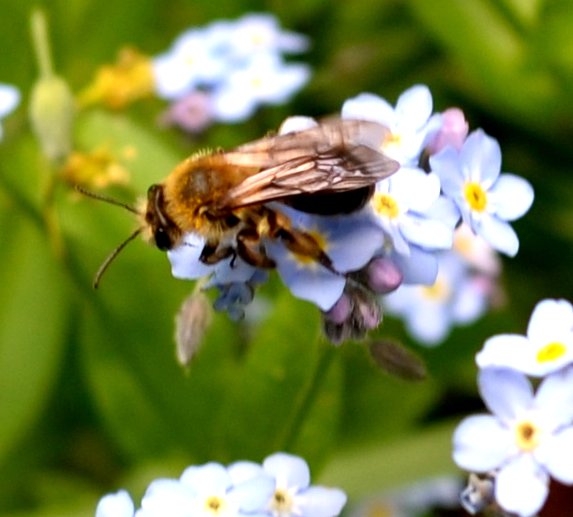
Well, that was a lot more bees than last week. Here is a click beetle in their favorite mode - brown. Apparently brown is considered a neutral color here too.. So, bugs? Yes, here's one of those fiber to leafhopper. Is it the same species as the one last week that looked white up close but had this pattern of gold up close or is it a new species? And is this thing a mirid nymph of some kind of plant bug?
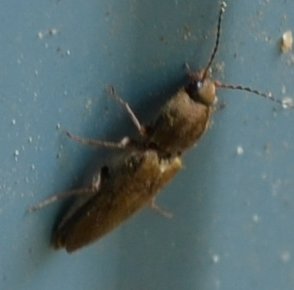
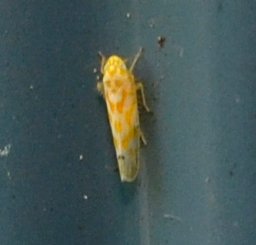
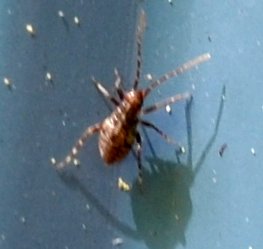
Here we see the very popular (in the sense of likes to get close to other such bugs) brown marmoratedb stinkug. which I found inside my house and I'm not a fan of killing -with a couple of exceptions and so this being such an exception, sorry buggy. Outdoors the most popular bugs look to be stink bugs, Like this one, a gorgeous reddish but with some textured background. .

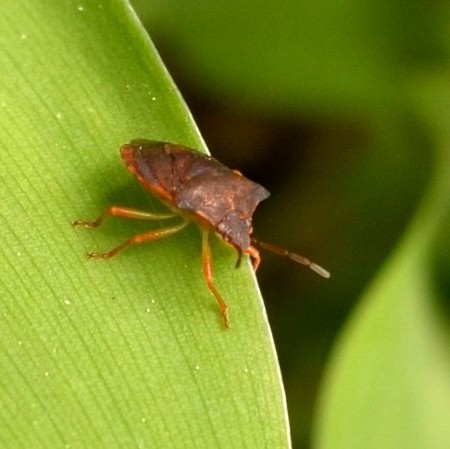
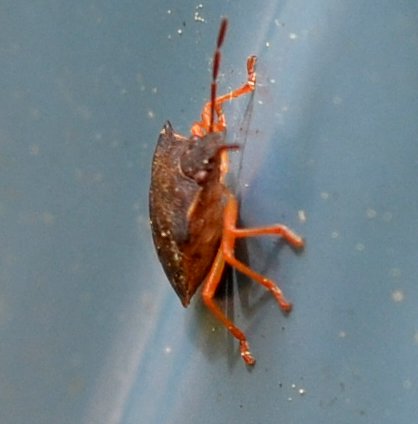
The Red Admirals are back and just looking for a spot to rest horizontally in the sun. This first shot was from a distance, on top of a bunch of leaves. Then onto substrate path and tests its upper body muscles (kidding, kids!) which is the bunch of connective tissue that makes the wings flap. Finally, some kind of larva, a really tiny one about mm long.
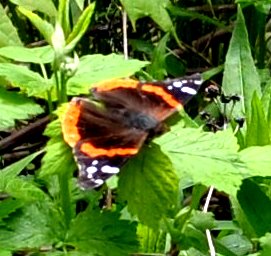
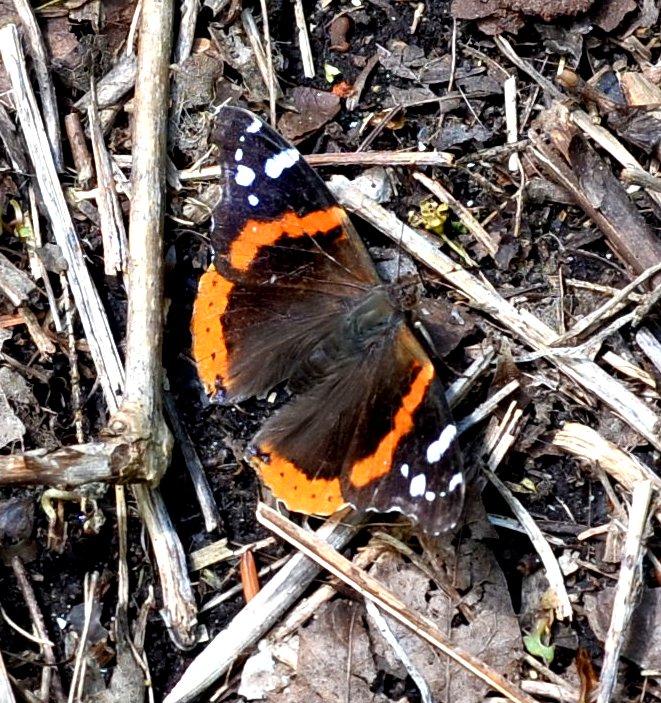
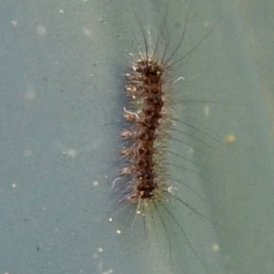
The pond hasn't been still. Now you can see how well the little ones stack up against their "ancestors". Here's the scene back in April 22. So these tiny tadpoles are about 3 weeks into their march to adulthood.
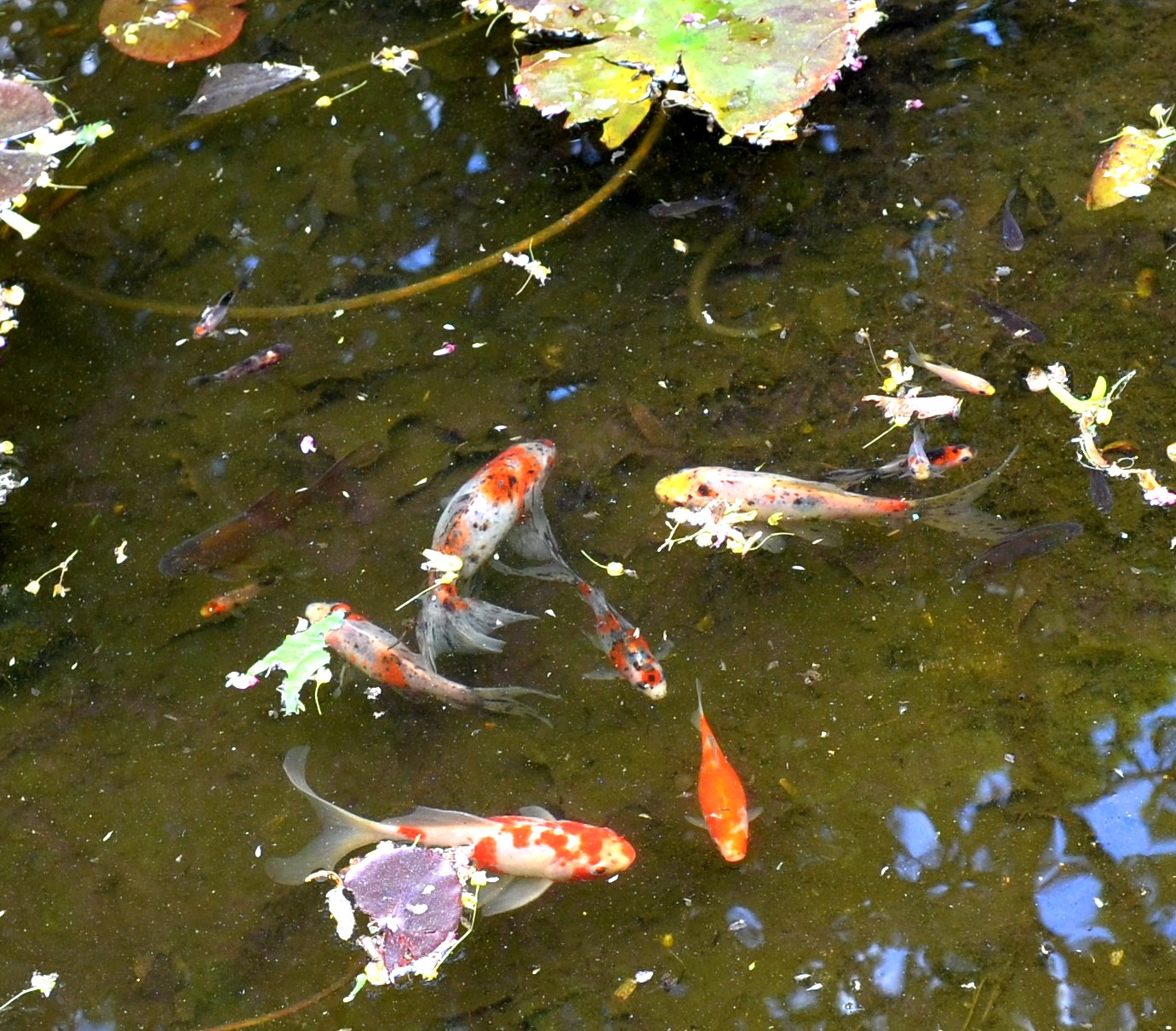
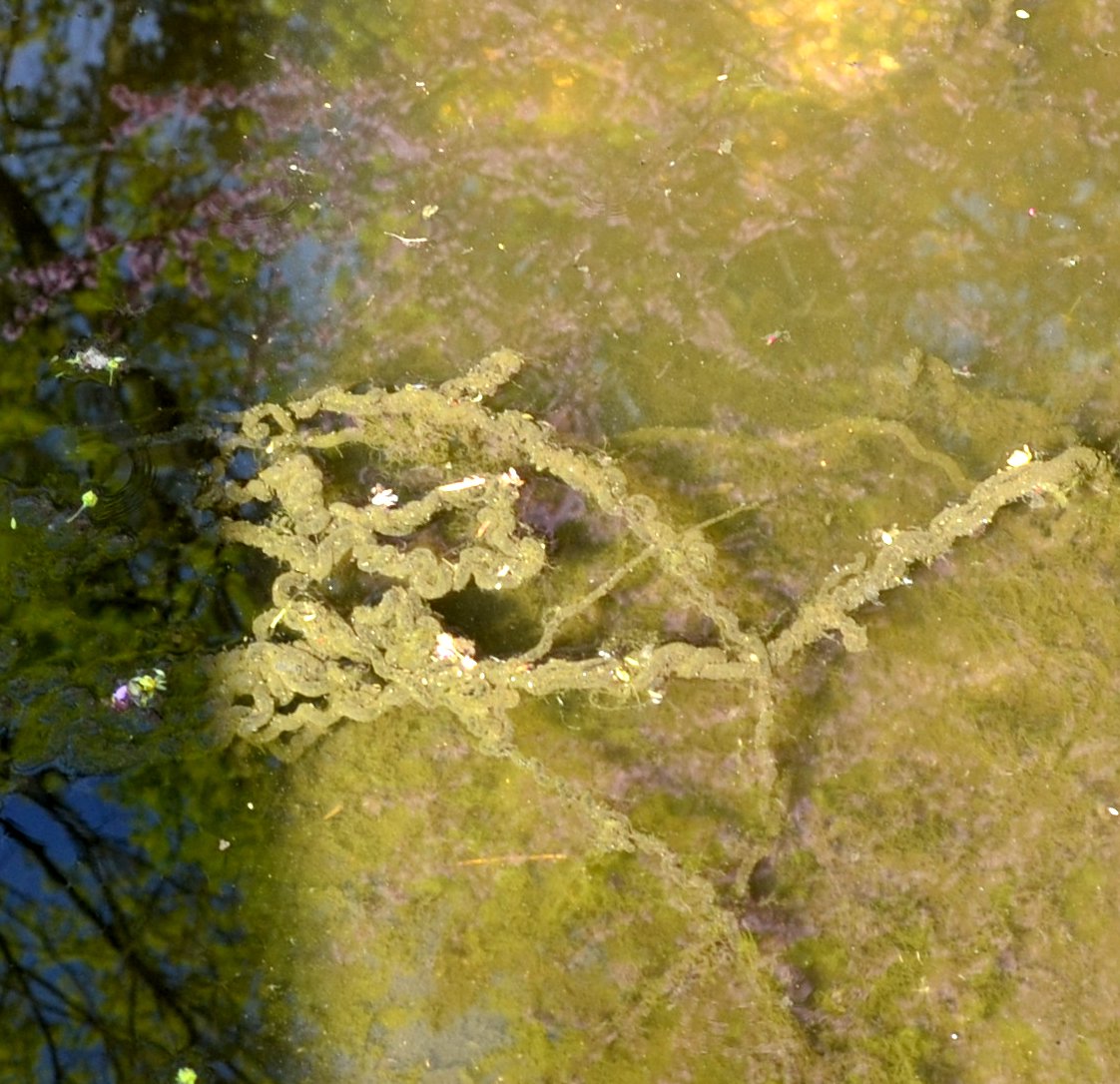
I give up. We have to open the doors to the flies. Be brave. These fatter bigger things look like fungus gnats on speed. We will have to ID them. Here is a flesh-eating fly. Remember last year when we found the variant with a bright red "tail". Keep your eyes open! Finally, one of the first hover flies.
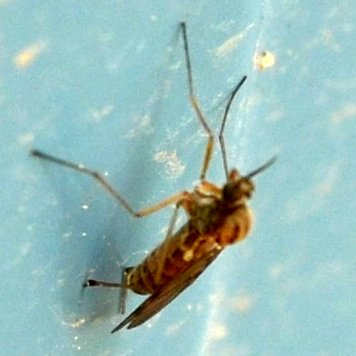
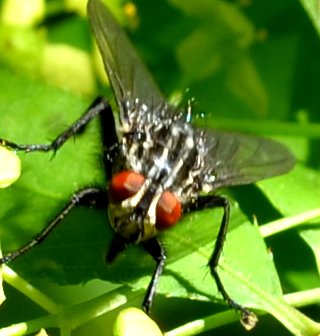
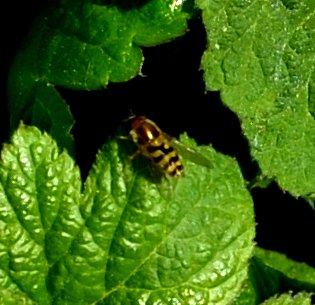
This little fly is Bibio femoratus. Why? (march fly with red femoral leg parts.)
The kinds of mosquitoes seem to multiply. Here's an all-black one. Then a mostly brown one with some familiar legs. No, it's not THE one.

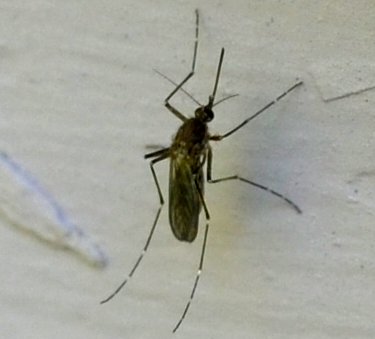
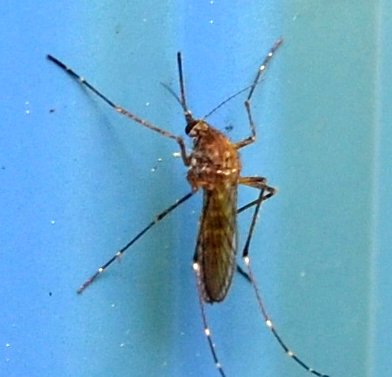
Doesn't it seem the second picture has a fox face? I took as many pictures as possible of this fly. Here it is in dorsal. Now watch it twist its arms around its face. Is this some kind of preening? Would you have believed these were all of the same fly?
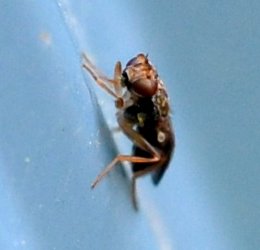
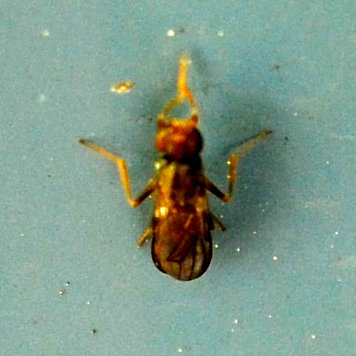

Weird wanderings of the mind. For some reason I felt drawn to these root maggot flies. Each shot seemed to be of a different aspect of its underlying character. Was that a fly or a donkey's head? These vinegar flies seem to be giving out more and more of its essence. Maybe because a couple of years ago I could not have discerned the subtle actions of light vs dark.
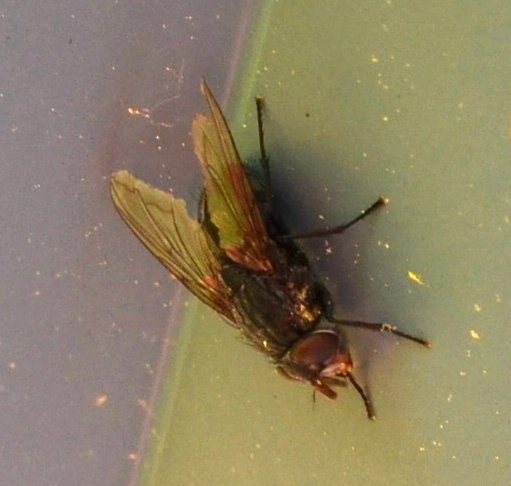
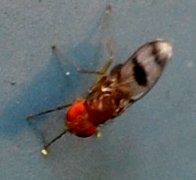
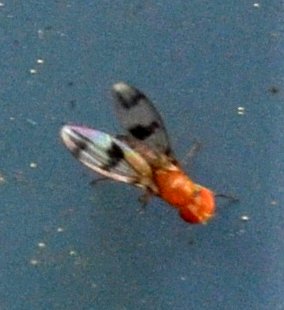
What? Did I forget the spiders? Just now that their little baby portraits have been drawn, we are asked to ask which of those precious baby faces has give rise to the present faces. First off a harvestman or woman, which is NOT a baby spider, since the harvestmen are not spiders? How's that? They both have 8 legs. But the harvestman's head and abdomen have shrunk together, so harvestmen don't have the bi-partite body of a spider!
Now what about the second picture, which seems to be the face or bust of a monocled man or maybe (use your imagination, mine's tired.) It seems to be an orbweb weaver of the genus Eustala. If that doesn't ring a bell, it is related to Eustala anastera, our beloved humpbacked orbweaver, the green spider that cheered us so when it was cold out there and in our hearts.
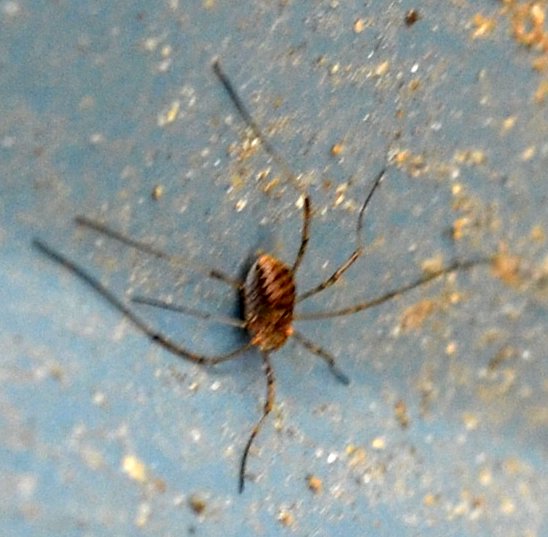
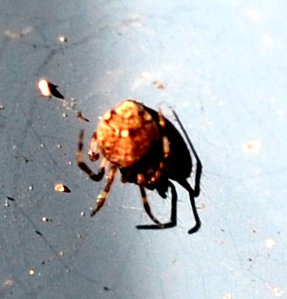
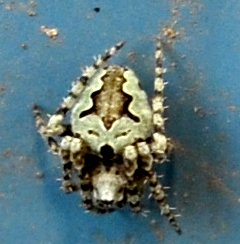
We still have some jumping spiders, the ones that look you in the eyes... This one seems to be espeially welcoming.
The next is Naphrys pulex. It'a a favorite of mine with its Victorian fabric tilings. What an intime setting for a little bee or wasp in a gorgeous cluster of white - garlic mustand flowers.
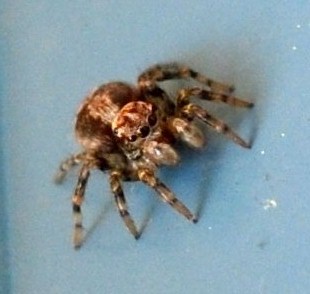
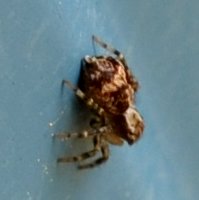
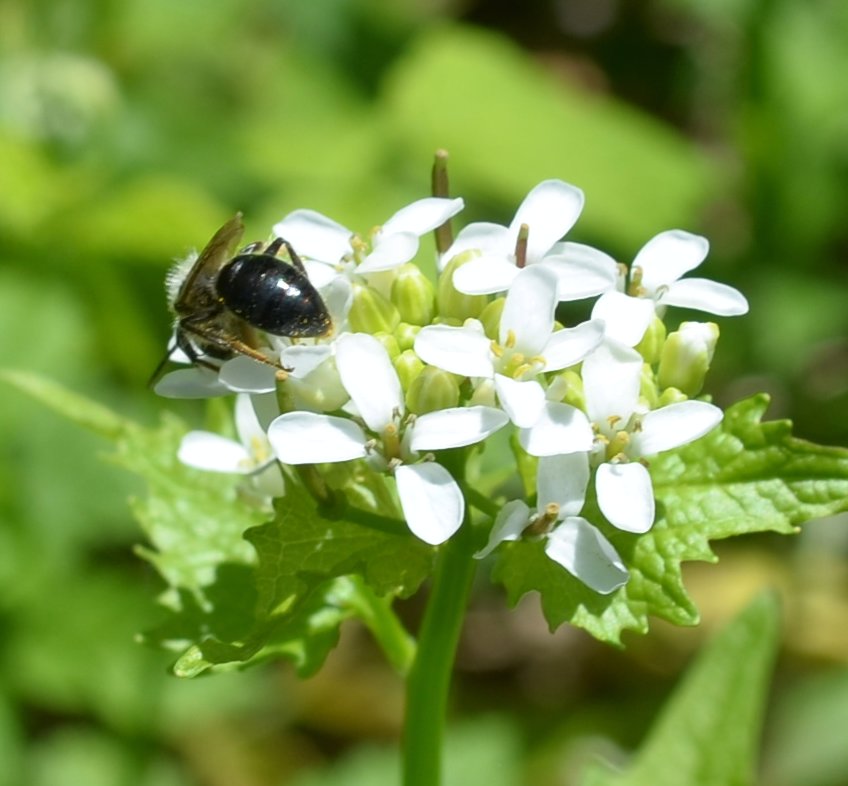
Many minute miniatura. One flower blooming out of a barren field. Tulips, trillia, and an extremely tired female European paper wasp. They must have been building upstairs on their new nest. She is probably tired from drinking and awaiting the climb to the nest with the water inside her. Every woman is a working woman, you know.



The toad eggs laid on April 22 are now almost three weeks old. On May 11, you can see how much the tiny dots in the egg stream have expanded.

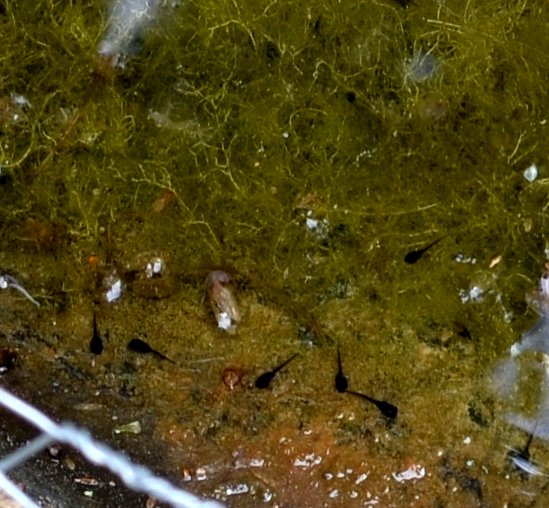
Love, Martha
Back to May 7, 2017
Forward to May 21, 2017
Back to 2017 menu














































